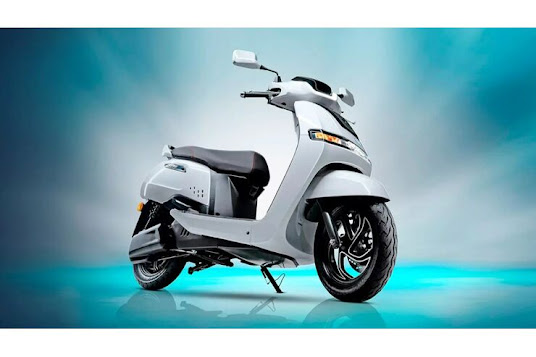BMW G 310 models are manufactured at TVS in India, TVS also acquired the English motorcycle brand Norton. The latest development in India is the fuel cell scooter.
The iQube electric scooter from TVS, which can be pre-ordered in India, is still fairly new. Prices: converted from about 1400 euros. Deliveries of the top version of the iQube ST, which will operate at speeds above 80 km/h and have a range of 145 km, are scheduled to begin in August 2022. With a capacity of 4.5 kWh in the battery pack.
A fuel cell instead of a battery
The next advancement appears to be a fuel cell version, which is currently being developed at TVS. A big advantage of fuel cell technology: Hydrogen is refueled within a few minutes, as was previously the case with gasoline, which means the batteries do not need to be charged for hours. A relatively simple arrangement of components can be seen in the now-leaked patent drawing: Two hydrogen gas tanks are almost vertical under the handlebars, covered with plastic cladding, and the fuel cell is more horizontal under the seat. There is also a small battery for the onboard electronics and for the temporary storage of electro-generated electricity, as well as an electric motor close to the rear drove wheel.
Set up as simply as possible
The development specification here is likely to be “easy to assemble and repair”, as this is the only way to obtain the new technology with a chance of acceptance by Indian and Asian target groups. Some basic requirements for this have yet to be established, above all a network of a filling station for hydrogen, which is highly volatile and therefore difficult to transport and store. In addition, it must be clarified how to generate hydrogen, whether it is “green”, i.e. sustainable solution that not only reduces CO2 emissions locally but can also be persuasive in the general analysis.
Source:technewsinsight





No comments:
Post a Comment